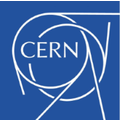Jiskefet unifies two functionalities: a) gathering, storing and presenting metadata associated with the operations of the ALICE experiment, b) tracking the asynchronous processing of the physics data. The data of the collisions generated by the detector are described using metadata with the end to find the right data for research and monitoring the workings of the detector.
Jiskefet will replace the existing ALICE Electronic Logbook and AliMonitor, allowing for a technology refresh and the inclusion of new features based on the experience collected during Run 1 and Run 2. The electronic logbook system gathered thus far 5000 LHC fills, 280.000 runs which comprises to about 37 GB data from 195.000 log entries and 20.000 file attachments. For monitoring a system, later known as AliMonitor, was developed. Information about CPU and memory usage, consumed and wall time, open files and network traffic is presented. Since its deployment it has gathered 12.9 million master jobs amounting to 97 GB data.
Methods and tools
As a method of development we use Scrum. Although not very strict in its application we deliver a product and discuss this with the client every week in a video conference.
The development of Jiskefet has been done by several student teams. The main effort is done in Amsterdam at the AUAS. We use GitHub as a repository for our source code, scripts, documentation and all the rest. As a scrum board we use JIRA.
For deployment we use Ansible. Of course NPM and nodemon for package and file management. Testing is part of our continuous integration process for wich we use Travis CI and Jenkins. The testing itself is done by Mocha, Karma and Jest. The linting is done by TSLint. We use CodeCov to determine how much of the code is being tested.
Jiskefet has to be in production until 2029. Because during this period several students and members of the staff will be involved in the development and maintenance, sustainability of the application is of importance. The availability of the system should be optimal and not be a reason for the detector to stop taking data in. Every entry should be logged and although the GUI and REST API are not essential the database should be highly available. Once in the repository no data should be lost.
Implementation
The software stack consists of several technics. We use WebUI which is developed by the ALICE team. One of the main non-functional requirements is to develop a REST-API as a back-end. RESTful Web services are constrained to be a client-server architecture, stateless, cacheable, layered and have a uniform interface. Advantages are good performance, scalability, simplicity, modifiability, etc. The back-end is implemented using Node.js The database is implemented using MySQL.
What is in it for you?
You will work on a project to be in production at a world class institute. Your name will be mentioned as team member and you can mention the project in your portfolio applying for a job. The project complies to the highest professional standards and represents to a high level what you can expect from a realistic business application.

